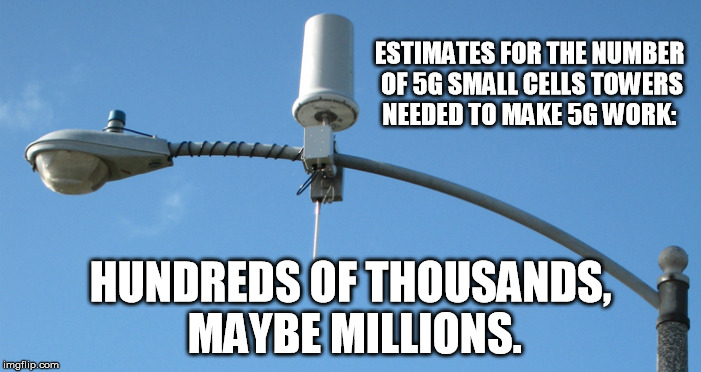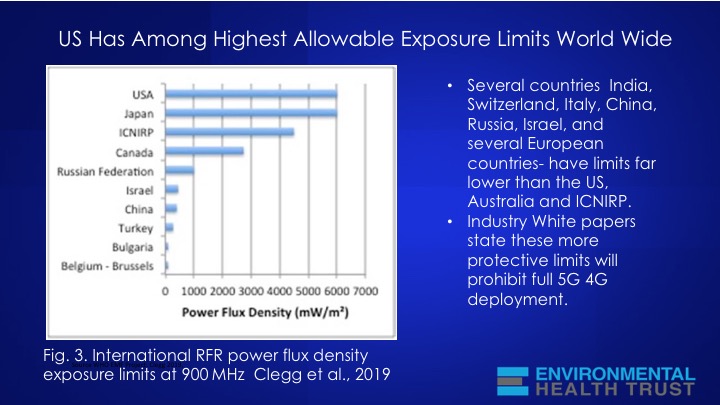 By B.N. Frank
By B.N. Frank
Worldwide opposition to 5G technology has been ongoing for years. This has slowed and/or stopped installation in some locations but not China which has already activated it throughout much of the country (see 1, 2). More from Fierce Wireless:
China telcos have 1 million-plus 5G base stations, but are they beating the U.S. in 5G?
The top executives of the three major Chinese telcos spoke at MWC 2022 in Barcelona this week via pre-recorded videos presented virtually. They read their prepared speeches, which provided some sparse details about their 5G networks.
Yang Jie, Chairman of China Mobile, said, “We will keep pushing for the construction of 5G plus gigabit fiber network, deepen multi-frequency collaboration and co-construction and sharing, improve 5G private networks and propel the scaled expansion of 5G applications.”
Jie was partly referring to the fact that China is getting a fourth wireless provider — China Broadcasting Network (CBN) — which is partnering with China Mobile to co-build and share a 5G network under an 11-year agreement.
RELATED: China Mobile joins China Broadcasting to build 5G network
Jie said, “By the end of 2022, we are expected to roll out a total of over 1 million 5G base stations with subscribers using 5G network to exceed 330 million, and 5G commercial use cases to be more than 10,000.”
Meanwhile, China Unicom and China Telecom are co-building a 5G network, which is expected to result in huge cost savings.
RELATED: China’s carriers to build a shared 5G network
Ruiwen Ke, Chairman and CEO of China Telecom, said yesterday, “We have built the largest 5G SA RAN sharing network, the largest NB-IoT network and the largest gigabit optical network in the world.”
He said that China Telecom is the first telecom operator in the world to operate a cloud network and IT infrastructure in a unified and centralized manner. Ke added, “China Telecom is willing to share our technologies and solutions in cloud computing, cloud-network convergence, 5G co-construction and sharing, and gigabit broadband and work together with the industry to lead new technologies and industrial ecosystem.”
Finally, LieHong Liu, Chairman and CEO of China Unicom, said, “Since the 5G commercial launch in China in 2019, we took the initiative with China Telecom to build the world’s first, largest and fastest 5G SA network under the co-build and share model.” He said the companies have deployed 690,000 shared 5G base stations and 660,000 shared 4G base stations.
Chips play a big role
According to a recent opinion piece in the Wall Street Journal — jointly authored by Eric Schmidt, a former CEO of Google, and Graham Allison, a Harvard professor — China is trouncing the U.S. in terms of 5G. However, two U.S. analysts have different perspectives on China’s 5G progress.
Since the Trump administration began the war against the Chinese vendors Huawei and ZTE, the Chinese telcos have begun giving most of their business to the Chinese vendors in a show of solidarity. But according to Mobile Experts principal analyst Joe Madden, this may be dragging down the technical sophistication of China’s 5G rollout because Huawei and ZTE have lost access to American-made chips.
Madden said he tracks China very closely because it’s a significant percentage of the telecom market. He said Huawei buys components from companies in Japan, Taiwan and the U.S. “Because of that we have a lot of sources of data for Huawei and have a very close read on what they’re doing,” he said.
In April 2020 Huawei was cut off from semiconductors from the U.S. “Huawei went into survival mode,” said Madden. “They had a stockpile that lasted until the end of 2020. And then they ran out.”
RELATED: Huawei CEO says further U.S. restrictions could open ‘Pandora’s Box’
Madden said the Chinese government changed its plans for 5G, and instead of issuing another spectrum tender in late 2020 for 5G C-band, they decided they weren’t going to do 5G C-band but instead focus on lower spectrum bands such as 500 MHz and 700 MHz. “Huawei will be talking about shipping 300,000 base stations last year, but those base stations are low-capacity, non-massive MIMO instead of the C-band high-capacity MIMO,” said Madden.
But Leonard Lee, principal analyst with Next Curve, differs in his assessment. He said “it’s tricky” in terms of Huawei’s chip constraints. “At face value it looks like they’re struggling. It will be interesting to see how they report in their Annual Report.”
He said even though Huawei and ZTE, along with many other Chinese companies, are on the U.S. Entity List, U.S. companies can apply for waivers to sell to the Chinese companies on the list. “Intel is still selling tons of chips to China,” said Lee. And he mentioned other semiconductor companies such as Nvidia and AMD that are also selling to companies on the Entity List. “It’s Swiss cheese,” he said. “If the U.S. really choked off all the chip supply to China, there are a lot of chips already in Asia with ties to China. Also, they [China] could put U.S. companies on an entity list.” This would cause a lot of pain for U.S. semiconductor companies.”
Jon Pelson, author of the new book “Wireless Wars: China’s Dangerous Domination of 5G and How We’re Fighting Back” acknowledged that waivers are being granted. “You need to have people down in the weeds to say what’s getting through this. I’ve got to believe it’s getting some oxygen to them but not opening the spigot.”
Winning the 5G race
According to the Wall Street Journal opinion piece, “America is far behind in almost every dimension of 5G while other nations — including China — race ahead. America’s average 5G mobile internet speed is roughly 75 megabits per second, which is abysmal. In China’s urban centers 5G phones get average speeds of 300 megabits per second.”
Pelson said he doesn’t agree with the premise that 5G is all about faster speeds.
He said the transition from 4G to 5G heralded an era of new applications — such as Uber and Zoom — running on networks. “5G is about the apps in the network itself such as permissionless innovation and things that have never been done before. That is not China’s strength. People in China know to keep their head down because otherwise you get in trouble,” he said.
He suspects that China’s 5G networks are just faster 4G networks.
Pelson said the most important thing for other countries to lead in 5G is related to scale. “Telecom has succeeded on the basis of scale. When the GSM became the standard, that gave it scale. Today, Huawei’s corporate tool has been scale. The way to wrestle this back is to move to more of an ecosystem scale.”
He said the necessary scale will come from a larger vendor ecosystem that includes not only Ericsson and Nokia but also cloud companies such as AWS, Microsoft and Google; hardware providers such as Dell Technologies and HPE; semiconductor manufacturers such as Intel and Qualcomm; and systems integrators such as Deloitte and Accenture, to name a few.
And a large ecosystem of software programmers will be almost unbeatable. “Huawei may have 25,000 workers, but if you have suddenly 1 million coders…. Software companies is where America has dominated.”
This larger ecosystem is already being built, driven by the open radio access network (RAN) movement.
 Since 2017 doctors and scientists have asked for 5G moratoriums on Earth and in space (see 1, 2) and the majority of scientists oppose deployment. Since 2018 there have been reports of people and animals experiencing symptoms and illnesses after it was activated (see 1, 2. 3, 4). In 2019, telecom executives testified that they had NO scientific evidence that 5G is safe.
Since 2017 doctors and scientists have asked for 5G moratoriums on Earth and in space (see 1, 2) and the majority of scientists oppose deployment. Since 2018 there have been reports of people and animals experiencing symptoms and illnesses after it was activated (see 1, 2. 3, 4). In 2019, telecom executives testified that they had NO scientific evidence that 5G is safe.
Some researchers have claimed 5G deployment may be contributing to COVID-19 infections while others say it’s not. Nevertheless, there are health risks associated with 5G exposure as well as exposure to 4G and other sources of wireless Wi-Fi radiation (see 1, 2) and Electromagnetic Fields (aka “Electrosmog”).
Activist Post reports regularly about 5G and other unsafe technology. For more information visit our archives and the following websites.
- Safe Tech International
- 5G Space Appeal
- WhatIs5G.info
- EMF Scientist
- Electromagnetic Radiation Safety
- Environmental Health Trust
- Physicians for Safe Technology
- Americans for Responsible Technology
- Wireless Information Network
Become a Patron!
Or support us at SubscribeStar
Donate cryptocurrency HERE
Subscribe to Activist Post for truth, peace, and freedom news. Follow us on SoMee, Telegram, HIVE, Flote, Minds, MeWe, Twitter, Gab, What Really Happened and GETTR.
Provide, Protect and Profit from what’s coming! Get a free issue of Counter Markets today.